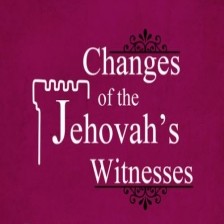To this may be added the testimony of D. D. Luckenbill: “One soon discovers that the accurate portrayal of events as they took place, year by year during the king’s reign, was not the guiding motive of the royal scribes. At times the different campaigns seem to have been shifted about without any apparent reason, but more often it is clear that royal vanity demanded playing fast and loose with historical accuracy.”—Ancient Records of Assyria and Babylonia, 1926, Vol. I, p. 7.
Insight On the Scriptures-Volume I. 1988. p. 451
A younger son and successor of Sennacherib, king of Assyria. In one of his inscriptions Esar-haddon confirms the Scriptural account of his father’s death (Isa 37:37, 38), saying: “A firm determination ‘fell upon’ my brothers. They forsook the gods and turned to their deeds of violence, plotting evil. . . . To gain the kingship they slew Sennacherib, their father.”—Ancient Records of Assyria and Babylonia, by D. Luckenbill, 1927, Vol. II, pp. 200, 201.
Insight On the Scriptures-Volume I. 1988. pp. 757-758
Early in his reign Esar-haddon began the restoration of Babylon, which Sennacherib had destroyed. The temple of Esagila was restored and, of the city itself, Esar-haddon says: “Babylon . . . I built anew, I enlarged, I raised aloft, I made magnificent.”—Ancient Records of Assyria and Babylonia, Vol. II, p. 244.
Insight On the Scriptures-Volume I. 1988. p. 757
Esar-haddon Most frequently suggested is Gyges, king of Lydia in western Asia Minor, called Guggu in the records of Assyrian monarch Ashurbanipal. (Ancient Records of Assyria and Babylonia, by D. Luckenbill, 1927, Vol. II, pp. 297, 351, 352)
Insight On the Scriptures-Volume I. 1988. p. 980
Ancient Records of Assyria and Babylonia Volume I External Link
Ancient Records of Assyria and Babylonia Volume II External Link
